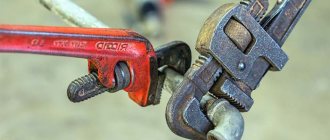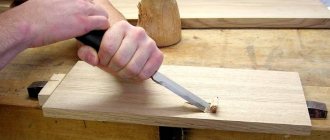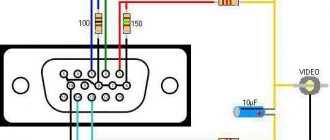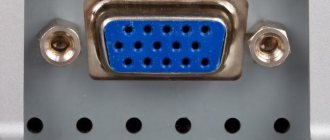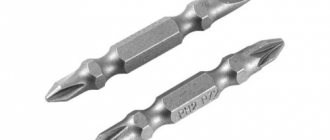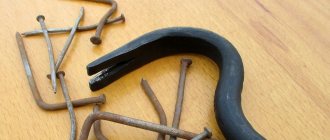During construction, finishing or working with wood, there is often a need to make various recesses in materials. Everyone knows that round holes can be easily drilled using a drill with a drill bit or a hole saw. But with square, rectangular or complex-shaped recesses the situation is different. And here a chisel comes to the aid of the master; we will tell you what it is in this article.
So, why you need a chisel became partly clear already from the introduction, but let us repeat: this tool is necessary for making recesses of various shapes in a variety of materials.
What materials are we talking about? Yes, about almost anyone. With this impact device you can process wooden products, make niches or grooves in brick, concrete, stone. A wedge-shaped SDS chisel with a chipper is capable of splitting rock or concrete during the dismantling process. A device in the form of a roller cutter is used for drilling holes in durable rocks.
Each listed task corresponds to devices of a certain shape. That is, it is useless to approach materials made of natural or artificial stone with a tool for processing wood and vice versa. But despite the different shape and appearance of the instruments, they are all united by a common principle of action - impact-splitting or impact-cutting.
What is this chisel?
Any construction chisel is a device that receives strong blows from a hammer, perforator or chipper with its rear part, and transmits it through a strong metal body to the contact zone of the device with the rock. At the same time, the working leading edge of the punch is always sharpened, which allows you to concentrate maximum energy on the minimum contact patch. Due to this, the material being processed cannot withstand and is cut through or split. So, blow by blow, the sharpened device penetrates deeper into the surface.
Making a dovetail notch with a wood chisel
In order for the device to withstand the colossal loads that occur at the point of contact of its working edge with the workpiece, only high-strength tool steels of certain types are used for its manufacture. Alloy grades are established by GOST standards. The standards also impose strength requirements on handle materials for manual operation.
In everyday life, we most often find chisels for woodworking (carpentry and carpentry), as well as chisel attachments for rotary hammers and jackhammers for processing stone, brick, and concrete. We will explain these types in more detail.
History and characteristics of the instrument
When excavating ancient cities and burial mounds, archaeologists often find remains of wooden utensils. This suggests that in ancient times our ancestors already mastered the art of woodworking. In Rus', all buildings, as well as all household utensils, starting from the necessary furniture and utensils, were originally made of wood.
With the development of the art of carpentry, manufactured objects became more and more elegant. To securely fasten wooden objects, a chisel tool was invented.
A chisel is a simple carpentry and joinery tool, the purpose of which is to gouge out holes, nests, and tenons during rough processing of wood . It is a square or rectangular steel bar, slightly tapering towards a pointed end, with a one-sided sharpening.
Along with square and rectangular shapes, semicircular fabric is widely used. This tool is intended for cutting the necessary grooves and cleaning up the corners of the product. Or a U-shaped blade, convenient for creating recesses for hinges on doors and window frames.
The joiner's and carpenter's chisel is a hand-held tool, and therefore is equipped with a handle for convenient use. The process of cutting holes is carried out using hammer or mallet blows, so the handle is made of hard wood, has a flat top, surrounded by a metal ring that does not allow the handle to split from the blow.
GOST
- GOST 1185-80 – for joinery and carpentry products.
- GOST 26474-85 – for diamond drilling heads and bits (types and sizes).
- GOST 20692-2003 – for roller-cone options (types and sizes)
Marking
According to GOST, a drill bit must be marked, which consistently indicates its type, diameter in millimeters, type of tool (by rock type), type of flushing/purging, type of support bearing, modification of the plant and serial number of the factory model.
Moreover, some characteristics have specific letter abbreviations and digital designations.
Marking of bit type:
- I – single-cone;
- II – double-cone;
- III – tricone.
Designation of the type of flushing or purging (location of channels):
- C – with central flushing;
- G – with hydromonitor side-type flushing;
- CG – with combined flushing;
- P – with central blowing;
- SG – with side blowing type.
Based on the type of support bearing, the following product categories are distinguished:
- B – on bearings with rolling elements, as well as with one/several thrust plain bearings, or without the latter.
- VU - on bearings with rolling elements, with several or one thrust sliding bearing, as well as with sealing of the support.
- H – radial sliding bearing, several, or one thrust sliding bearing, and the remaining bearings are sliding bearings.
- NU – the previous option, but with sealing of the support.
- A – at least two radial plain bearings, at least one thrust plain bearing.
- AU – the previous version, but with sealing of the support.
Depending on the type of rock for which the bit is designed, one of the following letter designations is located in the corresponding part of the marking:
- M – soft rock, tool with steel teeth.
- MZ is a soft abrasive rock with carbide teeth.
- MS – soft rock and interlayers of medium hardness, with steel teeth.
- MSZ – abrasive soft rock and medium-hard interlayers, with carbide teeth.
- C – steel teeth, for medium-hard rock.
- SZ – carbide teeth, for medium-hard abrasive rock.
- ST – steel teeth, for medium-hard rock with hard interlayers.
- T – steel teeth, for hard rock.
- TZ – carbide teeth, for abrasive hard rock.
- TK – carbide and steel teeth, for hard rock with strong interlayers.
- TKZ – carbide teeth, for abrasive hard rock with strong layers.
- K – carbide teeth, for hard rock.
- OK – carbide teeth, for very strong rocks.
NOTE:
The data listed above is taken from GOST 20692-2003.
Types of chisel
Hand carpentry tools should be present in the arsenal of any man who is accustomed to doing household work with his own hands . The set of devices for wood processing is determined by the type of work performed. Depending on the area of application, the chisel has the following types:
- Carpenter's chisel. Intended for use in large construction (log houses, roofs, floors). The width of the working blade exceeds the carpentry model and widens at the base. To attach the handle, instead of a shank, a conical tube is used, into which a wooden handle is inserted. The total length of such a tool is at least 300 mm. Together with carpentry tools, it will be quite useful for people living in private houses.
- Carpenter's chisel. It has a working blade no wider than 15 mm. It is used in smaller jobs (furniture, window frames, inserting locks). The handle is attached by attaching it to the shank until it touches the collar. A carpentry device is more suitable for use in an apartment.
Popular manufacturers
A small number of companies produce drilling equipment. This is due to significant manufacturing costs as well as low capacity in the drilling rig market.
Some of the popular manufacturers of bits are domestic brands OJSC VolgaBurmash and NPP BurinTech. The factories supply the industrial sector with tools with a roller-cone mechanism and diamond cutters. The products are aimed at oil and gas production, and therefore must meet all technological requirements. The equipment is produced using high technology.
The products are reliable and have a long service life. The body consists of reinforced parts. Some roller-cone models are equipped with a special seal to protect the support bearing.
The tool has milling and carbide tools and is used for drilling wells, expanding the diameter of the face and other types of work.
Another one produces its own bits. Models are produced with the “TarginTarbit” marking. Drilling equipment and heads are suitable for work at depths from 43 to 490 m. The company also restores worn-out equipment and deformed PDC bits.
For the construction of water supply systems and the mining industry, JSC Gormash is considered the main manufacturer of bits. The tool used for geological and construction work is not subject to heavy load. Therefore, companies produce inexpensive standard tools for drilling water wells from 30 to 300 m. For the mining industry, brands produce roller and blade equipment. High technologies and high-quality materials are used in production.
Drilling Technologies Plant LLC is a company also engaged in the manufacture of bits. The brand's assortment consists of mechanisms for prospecting, mining, hydrogeological industry, as well as for installing foundations and driving support piles. The company produces roller and bladed bits for drilling loose, soft soil. There are classic models for hard ground and low-abrasive soil.
The paddle equipment for viscous soil has an original structure, which ensures performance at high speed and increases wear resistance.
The Burovoy Instrument brand produces drilling mechanisms. The plant produces bits for small drilling rigs: auger tools and equipment with side and central flushing. For the geological industry, the production of blade mechanisms for drilling abrasive soil has been established.
The brand is a manufacturer of PDC tools. Diamond cutters have polycrystalline properties and are located on a minimum number of blades. This makes it possible to work at high speed. Wear-resistant elements are not afraid of exposure to soil of any hardness.
Difference from a chisel
When used at home, uninformed people often confuse a chisel with a chisel.
Although they look almost the same, these instruments are still different . They differ:
- According to the type of work performed. Chisels are used to create small recesses, to clean and align grooves, to create chamfers by cutting wood. A chisel is needed for more rough work performed by gouging.
- By method of use. To work with a chisel, only hand pressure is used, and gouging occurs together with a mallet or hammer.
- The design of the gouging object differs from a chisel in that it has a thicker blade and the presence of an upper crimp ring on the handle.
Nuances of choice
There are three main criteria for choosing a drill bit.
Purpose
For drilling soft soil and work with low loads, it is better to choose roller-cone or bladed bits. The equipment is distinguished by its reliability and efficient operation at high speeds. Both types of tools are used for geological searches for soil samples and for drilling medium-hard soil.
More difficult drilling conditions require the use of diamond or milling bits. They are suitable for installing foundations and drilling wells for various purposes.
Material and quality
Reliable equipment can withstand heavy loads and is not subject to deformation due to impacts. Carbon steel is used in the production of mechanisms. This material comes in different qualities.
When choosing, pay special attention to the quality of the cutters. Their edges should not have chips, scratches, the material should not crumble
Some manufacturers use a special composition that coats the main engine parts and cutting elements. The coating increases the service life and prevents the negative effects of soil.
Washing method
There are several types of flushing in bits - central and lateral. Both systems have their pros and cons. The central type of flushing provides cooling and cleaning of the weapon, but upon contact with the bearing the jet loses pressure. The advantages of side flushing include high jet pressure, which increases drilling speed. However, the impact of the liquid occurs on part of the periphery, when air with liquid and sludge is formed in the operating area of the bearing.
Drilling bits are an essential tool for various industries. Equipment is divided into types and subtypes. Each tool has its own purpose and characteristics. The choice of bit is based on several aspects. The material provided will answer many questions and help you choose the right tool for a particular type of drilling.
In the next video you will learn which bit is used for drilling oil wells.
Terms of use
This piece of joinery is used for hollowing out blind and through sockets in workpieces, while the workpiece must be fixedly fixed. The required nests are hollowed out according to pre-made marks. First, using a mallet, the transverse fibers of the wood are cut through, then the chips are removed in one working pass.
By periodically deepening the blade into the wood under the influence of a mallet, the required depth of the cut-out nests is achieved.
When chiselling, closed cutting occurs, as a result of which all three edges of the chisel must be cutting, so that during operation the side cutting edges clean the planes of the nests being made.
How to use
For household needs and working with wood, the user only needs traditional carpentry or joinery types. To make holes in concrete, stone or brick, use automatic equipment (perforators, jackhammers). There are rules to make using tools easier.
Features of work
When using household types, you must first secure the workpiece. Schematic markings are applied to the wood with chalk (pencil). A carpenter's chisel is suitable for creating notches along the contour. The cross-grain material is cut along the line. Then, using a carpenter's tool, they remove the shavings and carefully chop off the chips.
When working with a chisel, professionals do not recommend using material with knots. The recess line should not pass through former branches, otherwise uncontrolled removal of wood will occur. When chiseling with a hammer, it is easy to obtain the desired depth of holes or sockets.
The construction bit takes strong impacts from the hammer drill (chipper) and transmits waves through the metal to the contact area. The sharp leading edge of the working parts concentrates a lot of energy in a small area, so the tool quickly tears the surface material. The processed concrete, stone or rock cracks, and the nozzle penetrates into the inner layers.
Security measures
When struck with a hammer, cracks in the handles may increase, leading to splitting and the appearance of dangerous splinters. When processing wood, the tool is directed to the side (away from you). To prevent injury, the part must be secured.
When working with rotary hammers and jackhammers, it is important to choose the correct nozzle size and equipment power. During chiselling, monitor the condition of the tip. If parts get caught between layers of rock, it may be difficult to remove.
The tool vibrates during operation, which causes discomfort for the operator. To avoid getting tired, you need to take breaks after 15-20 minutes. Special glasses will help protect your eyes from debris, and construction headphones will help protect your ears.
Sharpening technology
The reverse side of the working part is flat, so you should only touch it when rust appears. In electric emery, the diameter of the abrasive wheels is smaller than the blade of the nozzle. When sharpening, the metal part is applied to the side of the moving part. Due to a good viewing angle, the user can control contact with the surface and prevent damage to the bevel.
On eclectic sharpening, pre-treatment is performed in case of damage to the cutting edge. After a rough circle, professionals recommend using a fine abrasive or finishing by hand with sandpaper. To prevent heating of the metal and a decrease in cutting performance, the tool must be periodically dipped into a container of cold water.
When working with an abrasive surface, the user's experience and accuracy are important, not speed. When sharpening by hand, use a special block or paper fixed on the glass. The direction of movement is from handle to blade. Controlling the friction angle will protect factory triggers from geometry violations. To remove grain, rough parts are moistened with water or oil.
Security measures
When carrying out joinery and carpentry work using the gouging method, it is necessary to pay attention to the condition of the equipment used . After all, the better the working surface is sharpened, the smoother the processed surface will be. To avoid injury when gouging holes, pay attention to the integrity of the tool handle and the striking part of the mallet.
There should be no chips or cracks. The workpiece must be securely fastened . The direction of work should be away from you.
A chisel is a tool with a narrow focus, so it is highly undesirable to use it for other purposes.
Carpentry work
- Wood is simply a unique working material. Durable and lightweight. It is easy to process, and after that it retains heat and smell.
- Raw wood is plastic and perfectly takes the required shape during processing.
- High-quality carpentry will highlight the grain of the cut, so there is no need to paint the wood.
- To prevent the timber from losing its pattern during processing, you must first determine the direction of the fibers. A complete picture will be given by sawing the timber across and along the grain, at an angle of 45°.
Proper placement of the drawing on the timber will help you create a real masterpiece and emphasize the beauty of the texture pattern!
chisel tool



